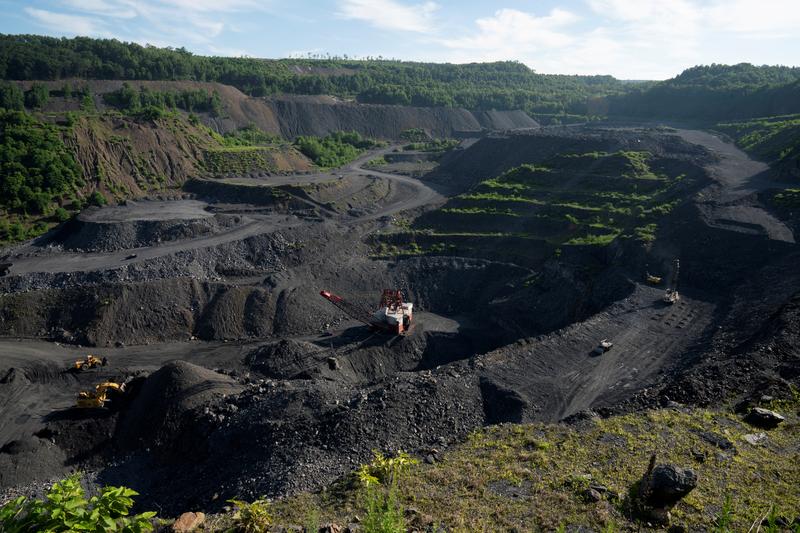BOSTON (Reuters) - Private equity firms are proving there’s still plenty of profit in the U.S. coal industry despite a decade of falling demand for the fossil fuel. They are spending billions of dollars buying coal-fired plants on the cheap - and getting paid even when they are not providing power.
Since the end of 2014, at least five U.S. private equity firms have bought coal plants in markets where regulators pay them to be on standby to provide emergency power when demand surges with extreme hot or cold weather, according to a Reuters review of U.S. regulatory disclosures and credit-rating agency reports.
The lucrative investments illustrate how fossil fuels will remain an important part of the energy mix - and continue spinning off cash for investors - even years after demand for them peaks as the world transitions toward cleaner energy sources.
The need for reserve power was on display during the utility crisis this month in Texas - the only U.S. grid system that operates without such an emergency system. A cold snap knocked out several of the state’s generating plants and triggered widespread blackouts, leaving a wake of human suffering including several dozen deaths.
The so-called capacity payments are given out in most U.S. power markets, and regulators tend to favor coal-fired generators that store heaps of coal on site when other power sources might be disrupted. In the Pennsylvania, Jersey, Maryland Power Pool (PJM), which has the largest standby market, capacity revenue payments average more than $100 per megawatt per day - an insurance policy that costs about $9 billion a year and aims to make sure the grid’s 65 million customers avoid blackouts during heat waves and Arctic blasts.
“The capacity power market is a certain source of revenue for coal plants that might otherwise be uneconomical,” said Sylvia Bialek, an economist at New York University’s Institute for Policy Integrity.
The administration of former President Donald Trump, a Republican, encouraged capacity market incentives for coal-fired generators. But President Joe Biden, a Democrat, is likely to change those policies in the coming years as part of an effort to slash nearly all of the U.S. power sector’s reliance on fossil fuels by 2035.
In the meantime, private equity firms are in a good position to compete for capacity payments because traditional utilities are under pressure from activist shareholders to reduce greenhouse gas emissions and to limit debt.
The private equity owners of Ohio’s Gavin Power Plant in the PJM grid, for example, have squeezed hundreds of millions of dollars out of the facility since buying it four years ago, even though it only runs about 60% of the time.
Lightstone Generation LLC - a joint venture between Boston’s ArcLight Capital Partners LLC and New York-based Blackstone Group Inc - took on $2.1 billion in debt from Wall Street banks to buy the plant and three much smaller gas-fired units from American Electric Power Company Inc in 2017, according to term sheets viewed by Reuters.
From 2018 to 2020, Lightstone’s power plant operations produced about $1.1 billion in operating profit, according to estimates from Moody’s Investors Service. Up to 50% of Gavin’s cash flow comes from being on standby for emergency power, according to several economists and credit analysts.
About 18 months after the Gavin acquisition, ArcLight and Blackstone went back to Wall Street to finance most of a $375 million special dividend they paid to themselves, according to credit rating agencies. Such dividends are a way for private equity firms to lock in profits and shift risk to their debt-holders, which are often mutual funds. If the business does well, the debt gets paid off at a premium. But if the business fails, the debt-holders end up with equity stakes in plants of declining value.
ArcLight did not respond to requests for comment. Blackstone declined to comment.
The private equity firms’ backers have also been making money on the investments, according to filings. The state of Connecticut’s retirement plan, for example, invested $85 million in ArcLight’s Energy Partners Fund VI, which holds stakes in the Gavin plant along with other energy investments, and has seen returns of about 8%.
Meanwhile, mutual funds that invested in Lightstone’s debt are receiving payments pegged to a floating interest rate that has ranged from 4% to 6% - far higher than about 1.4% on the U.S. benchmark 10-year yield.
‘ABSOLUTELY VITAL’
Other private equity firms have also been betting on coal power capacity payments.
Atlas Holdings, for example, led a joint venture to buy New Hampshire’s Merrimack Station coal plant in 2018, the centerpiece of a $175 million acquisition of generators from New England-based utility Eversource Energy.
Atlas declined to comment.
The coal plant hardly runs but has been eligible to receive up to $188 million in capacity payments from the New England ISO between 2018 and 2023, according to disclosures by regulators. Workers at Merrimack Station see their mission as a matter of life and death. They keep boilers warm and the plant in a constant state of readiness, said Tony Sapienza, business manager for Local 1837 of the International Brotherhood of Electrical workers.
“The capacity market is absolutely vital,” Sapienza said. “And without Merrimack Station, people might die in the winter or during really hot weather. It’s really that simple.”
The reserve coal plants create good jobs. Private-equity owned coal plants can pay their staff about $100,000 a year for keeping the facilities on standby and firing them up when needed, according to Shawn Steffee, business agent for the Boilermakers Local 154 union in Pennsylvania. He said coal plants in the state “ran like a freight train” during the recent cold snap.
In another profitable investment, private equity firm Riverstone Holdings LLC paid $1.8 billion in late 2016 to buy the remaining stake in electricity producer Talen Energy Corp. The take-private deal included stakes in several coal plants, including ones receiving PJM capacity payments, an “important component” of gross profits, according to an SEC disclosure. About a year later, Talen paid its owners, including Riverstone, a special $500 million dividend. Riverstone did not return messages seeking comment.
WITH REWARD COMES RISK
Private equity ventures into coal-fired power don’t always turn out well, with some deals getting caught up in the broader decline of the coal industry. A credit fund run by private equity firm KKR & Co Inc in 2015, for example, took a big stake in Longview Power LLC - whose major asset is a West Virginia coal plant plugged into the PJM electric grid - as part of a bankruptcy restructuring.
But in April 2020, Longview filed for bankruptcy protection again, wiping out some $350 million in debt, as coronavirus lockdowns cut electricity demand. KKR declined to comment.
Analysts and economists expect Biden’s administration to crack down on rules that prolong the lifespan of dirty coal plants as part of sweeping measures to fight climate change. Biden has named Richard Glick, a Democrat, as the new chairman of the Federal Energy Regulatory Commission. Under a Republican majority on the commission, Glick had been critical of FERC rules he contends unfairly favor coal over renewable energy sources in capacity power markets, saying they “would have made the Kremlin economists in the old Soviet Union blush.”
FERC did not respond to requests for comment, and the White House declined to comment.
“I’m confident, in the next couple of years, FERC will order changes,” said Ari Peskoe, director of the Electricity Law Initiative at Harvard Law School.
Policy changes could make it harder for highly-leveraged private equity owners of coal plants, like Lightstone, to refinance their debts, according to Richard Donner, a credit analyst at Moody’s Investors Service. About $1.7 billion in the company’s debt comes due in 2024.
Even so, Lightstone’s creditors are the ones with the greatest risk, according to Peskoe.
“Somehow the private equity guys always make out OK,” Peskoe said. “It’s everyone else who doesn’t.”
This article was originally published By Tim McLaughlin, reuters.com.










